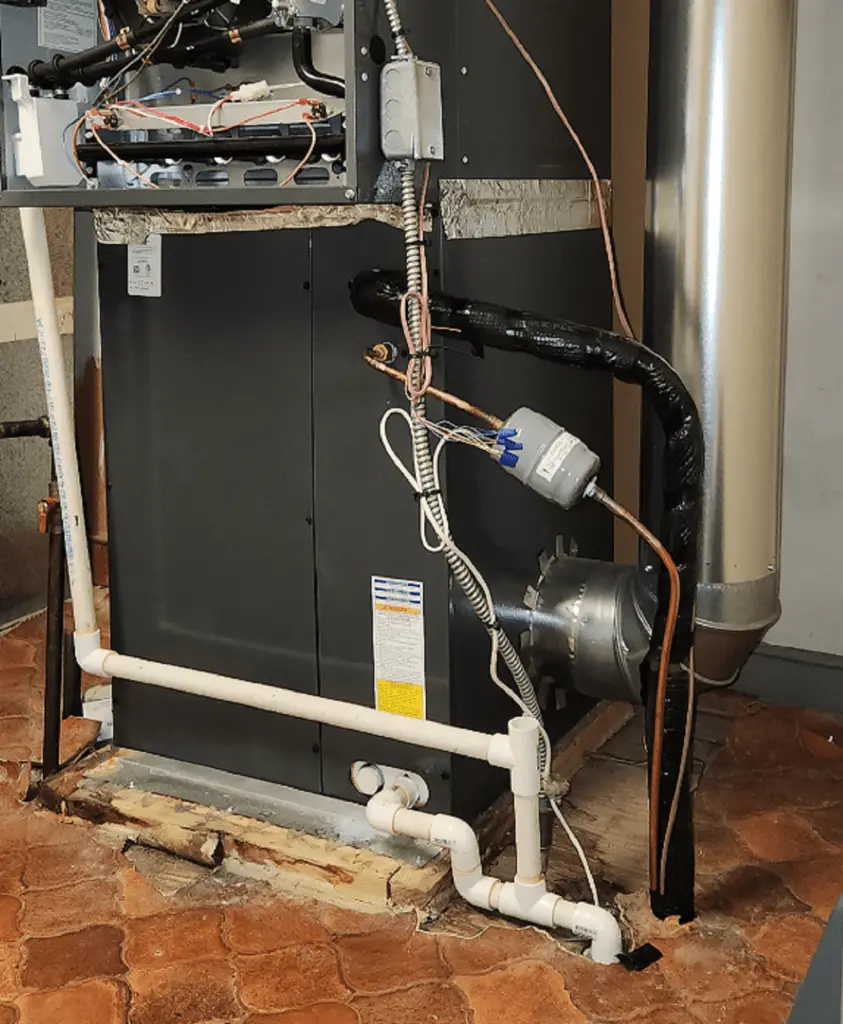The number of HVAC Problems I’ve seen since 1977 could fill a good size book. In that period of time between 1977 and now I’ve learned that not all problems can be lumped into a single category.
I like to brake down HVAC related problems into three categories. These categories have to do with:
- Installation
- Maintenance
- Parts
By separating these problems this way it can give you a better way or better ideas on how to analyze why you are having or anticipating problems with your HVAC system. Let me give you some good examples:
What Are Common Mistakes Made In HVAC Installation?
Air duct issues are amongst the common mistakes made in an HVAC installation. These duct failure problems are sort of an out of site, out of mind part of most HVAC systems. Many times home owners have problems with their heating systems and they finally get to a point where it’s an ongoing problem and just replace the furnace or the whole indoor and outdoor units, only to have the same problem again.
It never occurs to them that the problem is duct work or installation related. They naturally gravitate to the idea that the equipment is at fault. Duct work that is too small or improperly sized can cause compressor or heat exchanger failures. But how would the average home owner even know that?

It would take a well trained eye like mine (I’m not really too conceited or arrogant) to see what’s wrong in the image above. Truth is there is more than just one or two mistakes with this installation. But ductwork is the subject here. The duct in the image is attached to the side of the AC coil. It’s not getting cooled air from the AC, but it will get hot air from the furnace.
Ductwork problems are not always easy to fix. A simple test using a device or tool called a static pressure meter will determine if your system has the correct amount of ductwork. But it won’t find problems like the one above. On the label of most any air handler (furnace) you can find it’s rated static pressure. A lot of installers will never check the static pressure of a system after installation.
My daughter and her husband bought a house in southern Oregon for a rental. I could tell without a static pressure meter that the duct work was too small. The furnace ran really hot and the air flow was super noisy.
That’s another simple test you can make to see if the ductwork is right. Measure the temperature at the inlet and then the outlet of the furnace. If the difference is greater than the label in the furnace allows for you more than likely have a ducting problem. For example, most gas furnaces want a temperature differential of about 70 degrees between the air into and the air leaving the furnace.
HVAC Maintenance Problems And Solutions
The worst problem with HVAC maintenance is not having any maintenance done. The HVACR News found in a survey that “Only 30% of Americans Schedule Preventive Maintenance for Their HVAC Systems”. The image below shows a recuperative coil inside a 90% efficient gas furnace. Another out of sight out of mind overlooked maintenance problem.
The dirt on this coil can only be seen by removing the blower motor housing. This dirt blocks air flow and raises heat exchanger temperatures probably above factory specifications. The end result could be a cracked heat exchanger.

These coils get dirty from poor filtering of the air through the HVAC system. If you were to catch a problem like this early enough you could make changes to your filter system that could improve the air quality of your home and the life of your furnace and air conditioner.
When a technician is doing HVAC problem-solving, one of the last things he wants to do is pull the blower housing. Some blowers are easier to remove than others. But as a home owner that’s reading my article, now you know that if you have a 90% efficient gas furnace you may want to request that he or she pull the blower and inspect the recoup coil and the ac coil for dirt accumulation.
It’s going to cost extra money, but what would a new furnace cost. Proper maintenance can be expensive if you add it up over the years, it also adds to the life span of your equipment.
Another very common maintenance problem is a heat pump or an air conditioner running with an improper charge. Either too much refrigerant or not enough. How would you as a home owner even know.
I can’t tell you how many times I would get a call for a heat pump that wouldn’t cool when summer came around. I arrive on the job and find the system had leaked out all the refrigerant. The customer thought all winter it was working okay but there electric bill were super high. Go to this article if you want to know how a heat pump works.
It’s a great idea to have maintenance done in the fall when you own a heat pump. It’s a slow time for HVAC companies anyway.
Common Furnace And AC Parts That Fail
It didn’t used to be this way, but I think the most common part that fails in most any heating and air conditioning system are capacitors. Forty years ago I seldom changed a capacitor, they were manufactured differently.

Capacitors used to contain PCBs (Polychlorinated biphenyls), a man made chemical that was found to be harmful to the environment. Sometime in the mid 1970’s it was banned and the maybe it’s replacement had something to do with the lesser life span.
Also, capacitors used to be a lot heavier. Nothing like the light weight product you get today. Many things, not just capacitors, have changed in a way that isn’t always for the better as far as the consumer is concerned. But PCBs were probably a good thing to be rid of.
I mentioned refrigerant charges. A very common failure in heat pumps and air conditioners is refrigerant leaks. They can be caused several reasons for refrigerant leaks. Not long after I installed my own water source heat pumps the system for the main floor of my house quit.
I found a small copper line had vibrated against another copper line and the cap tube from the TXV valve had rubbed through and the power head lost it’s charge. The company gave me a new valve under warranty but warned me that that was my responsibility to check all piping in the system to make sure they didn’t rub. Not sure I agreed but I got a new part anyway.
I could go on and on about parts that fail. The thing to watch for is a part that fails over and over again. That would have to be addressed by a technician. And don’t shy away from changing technicians.

